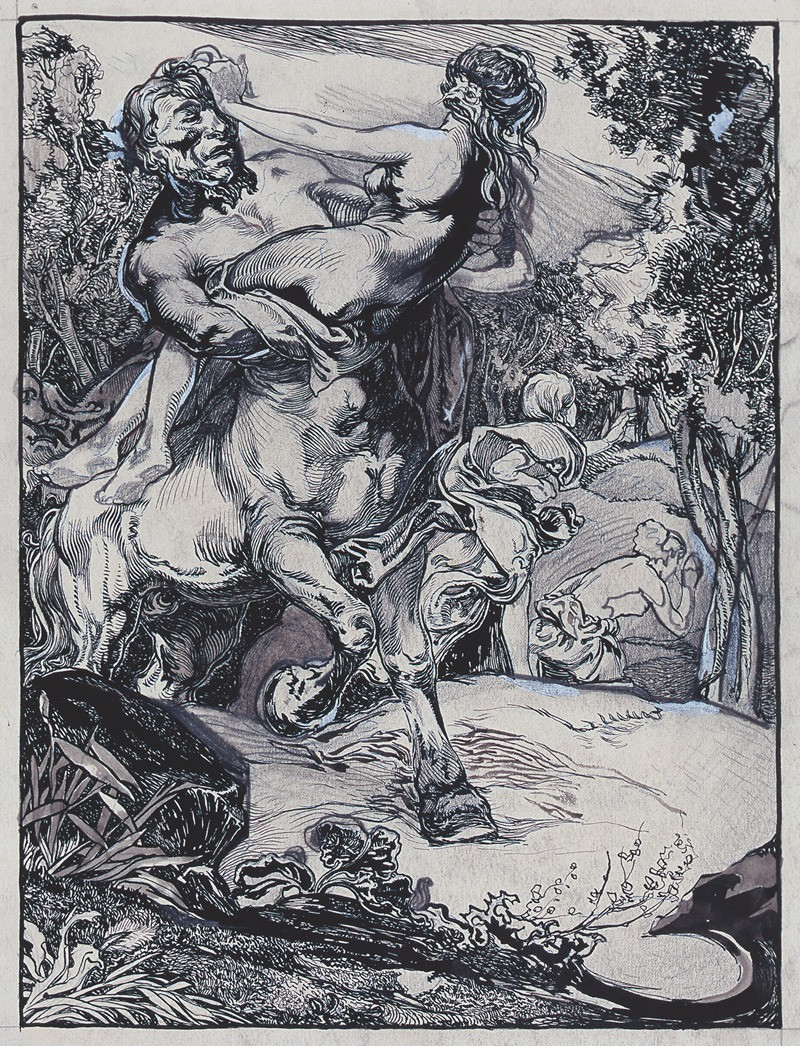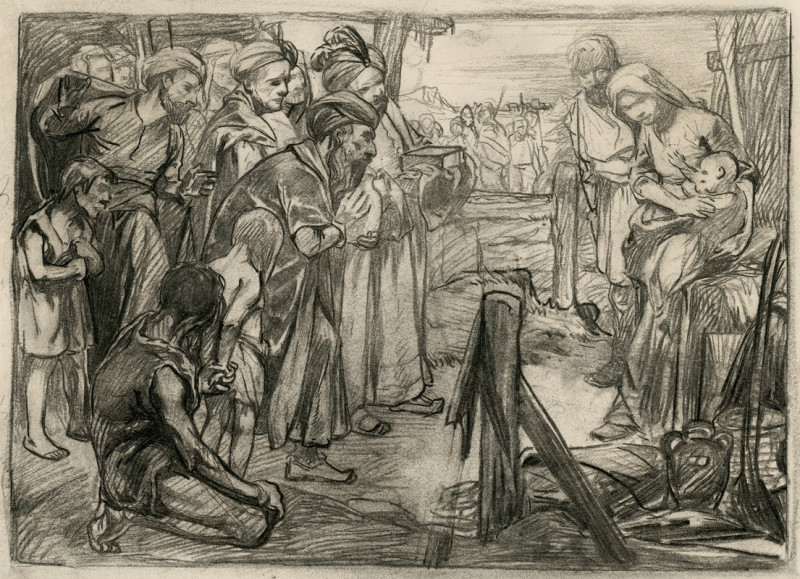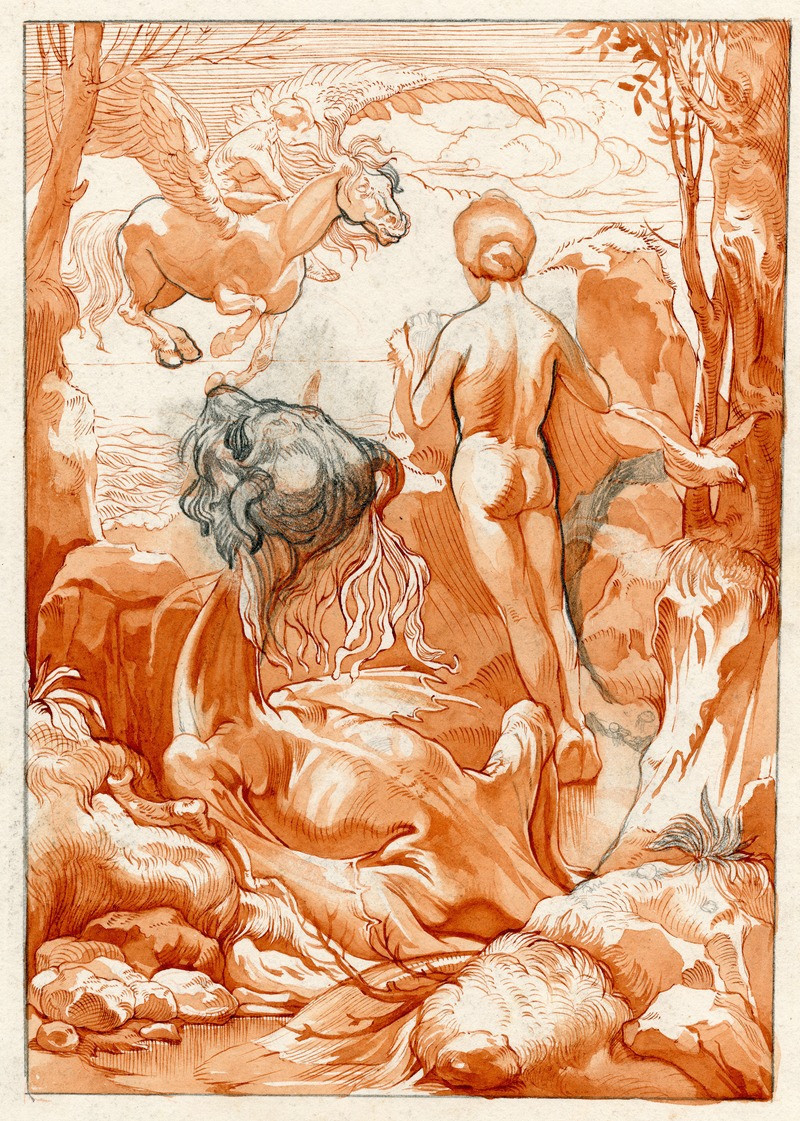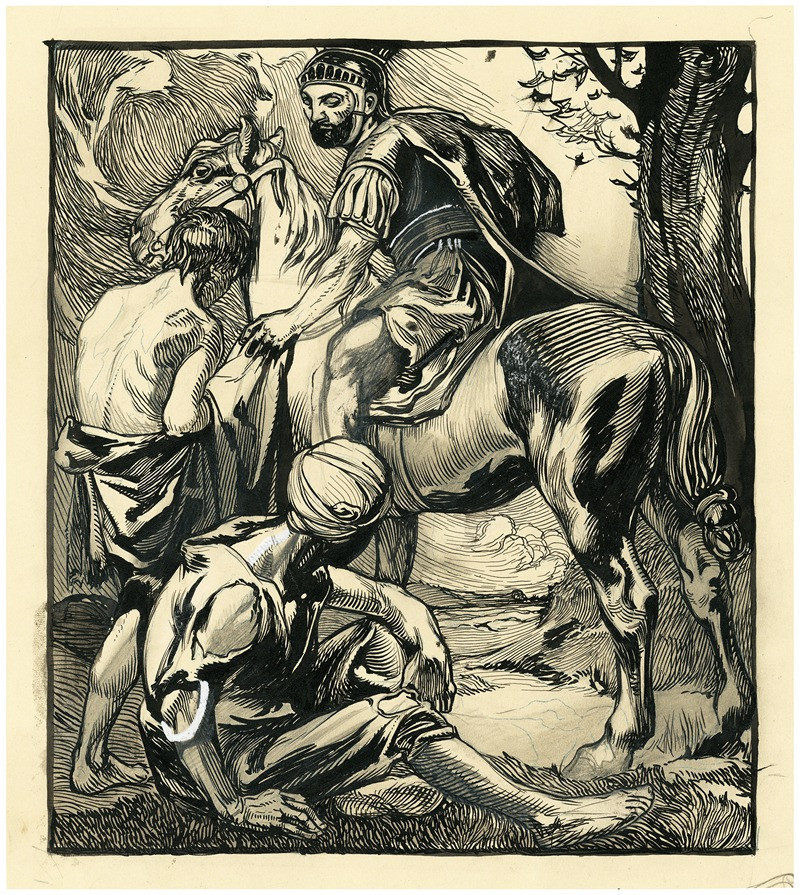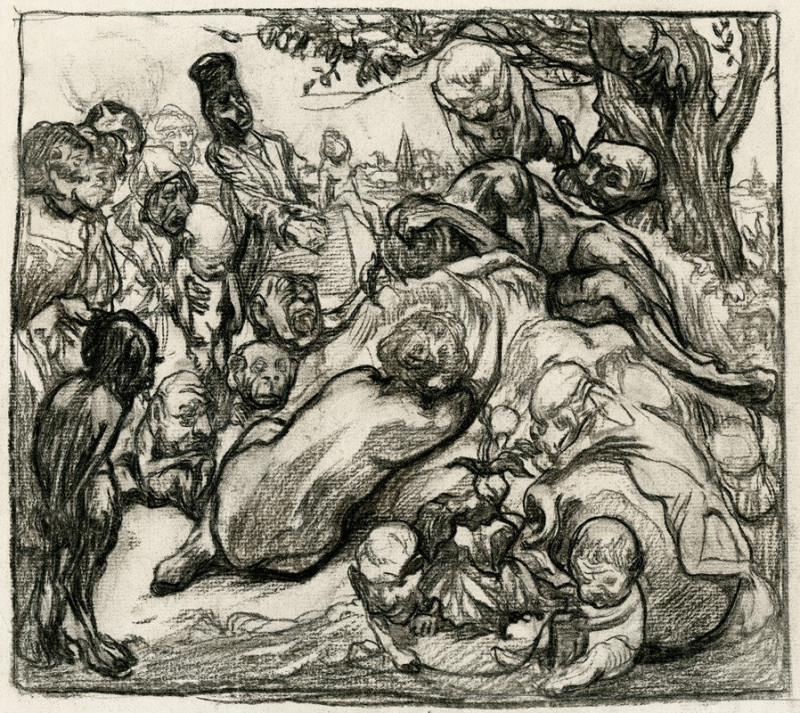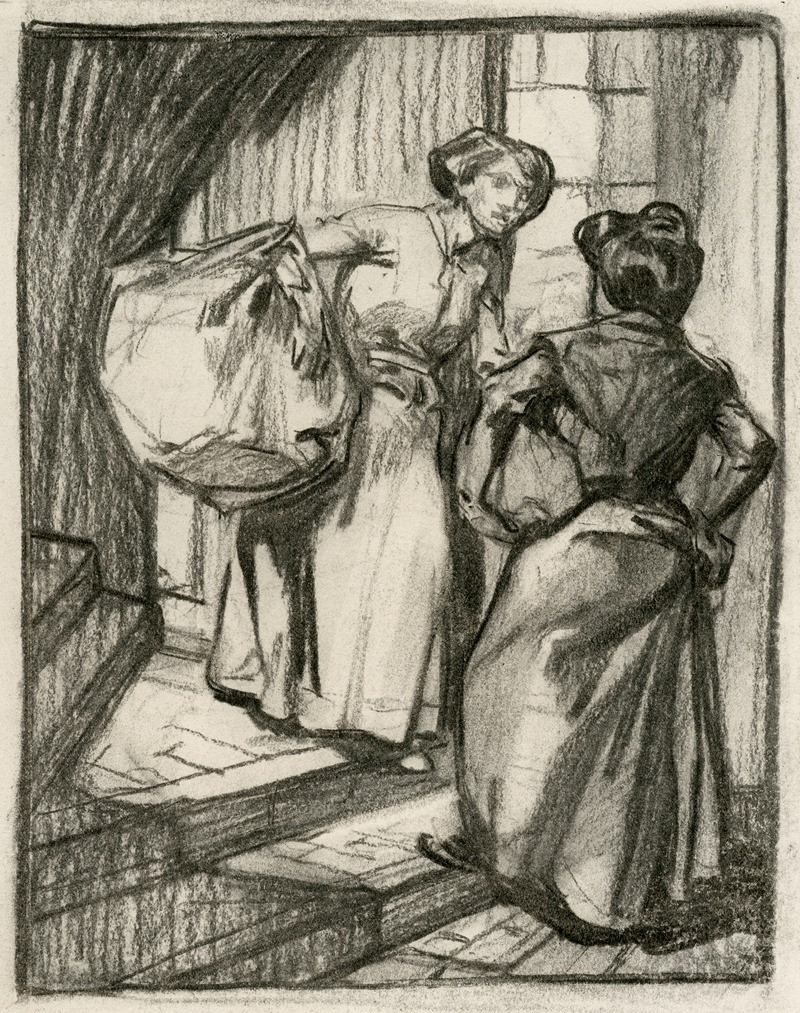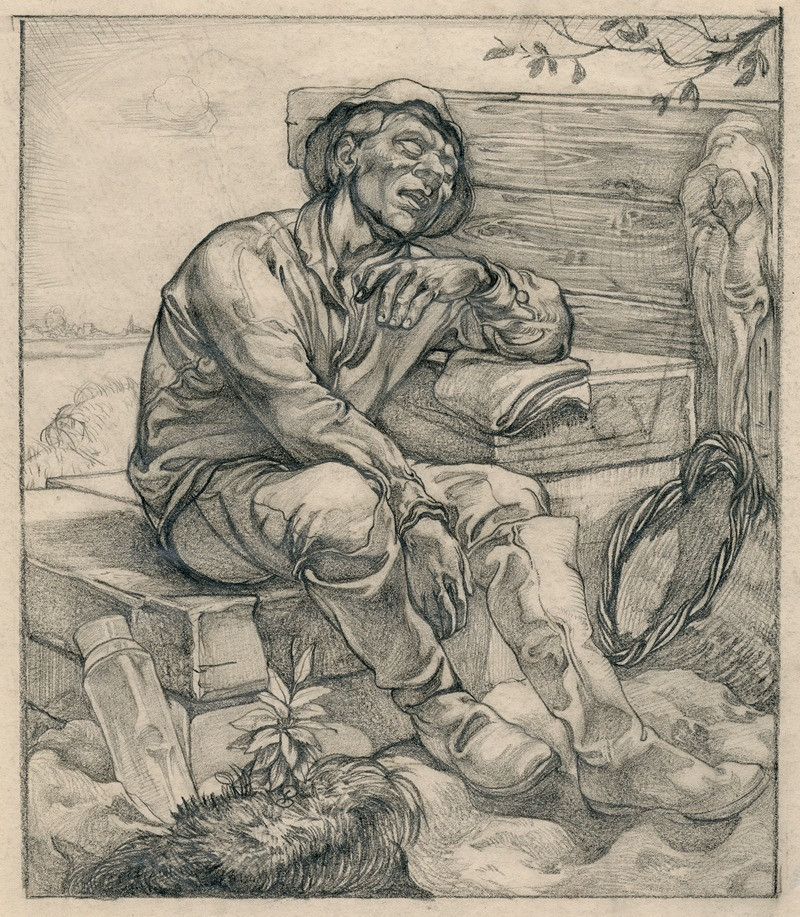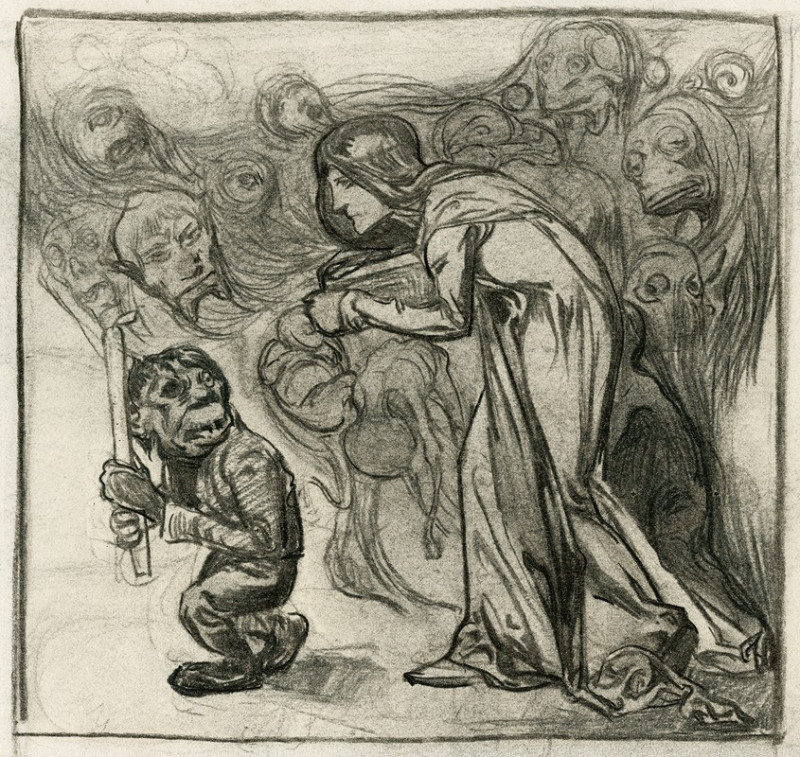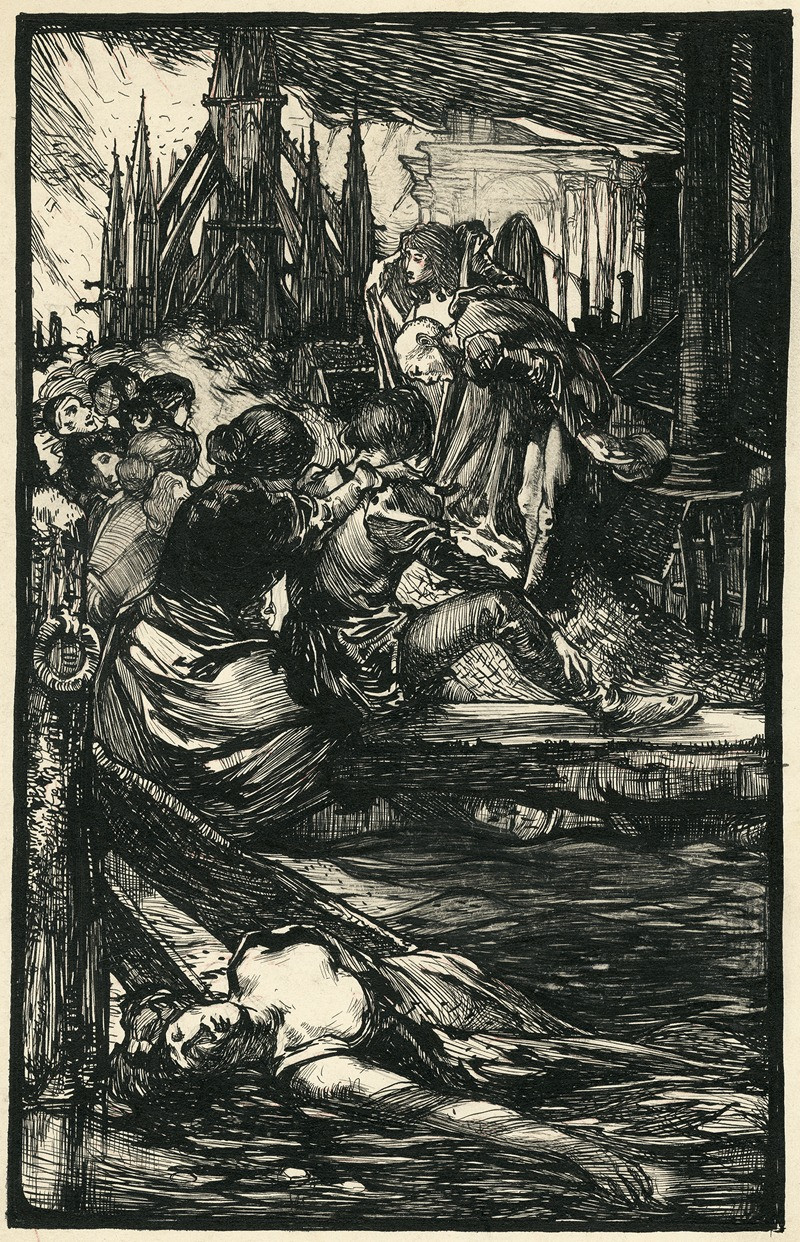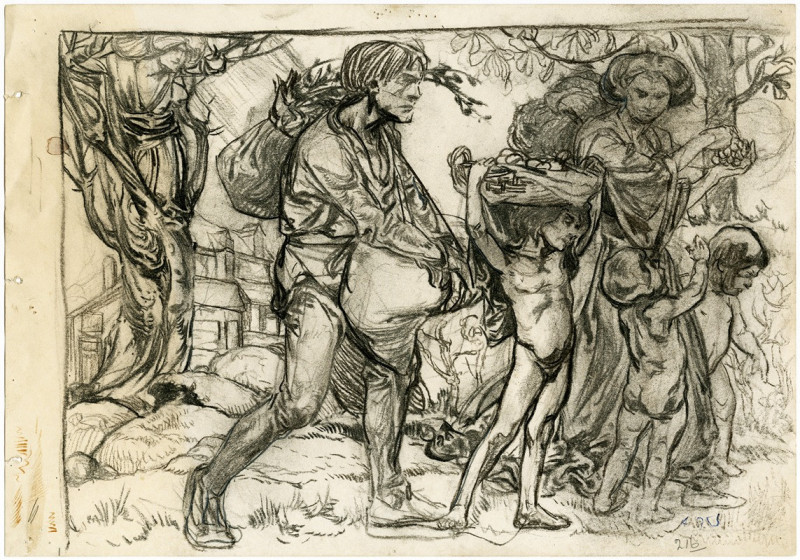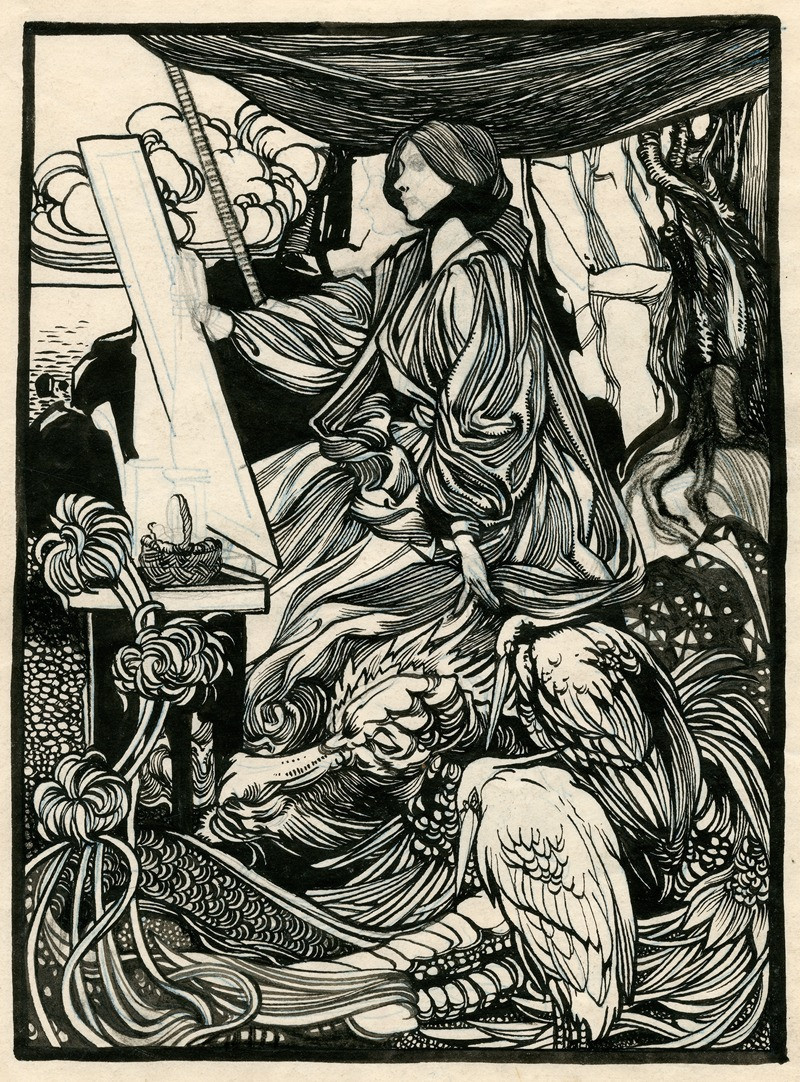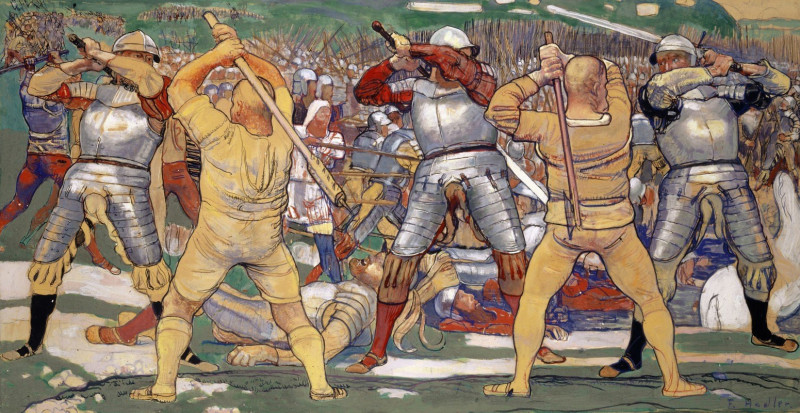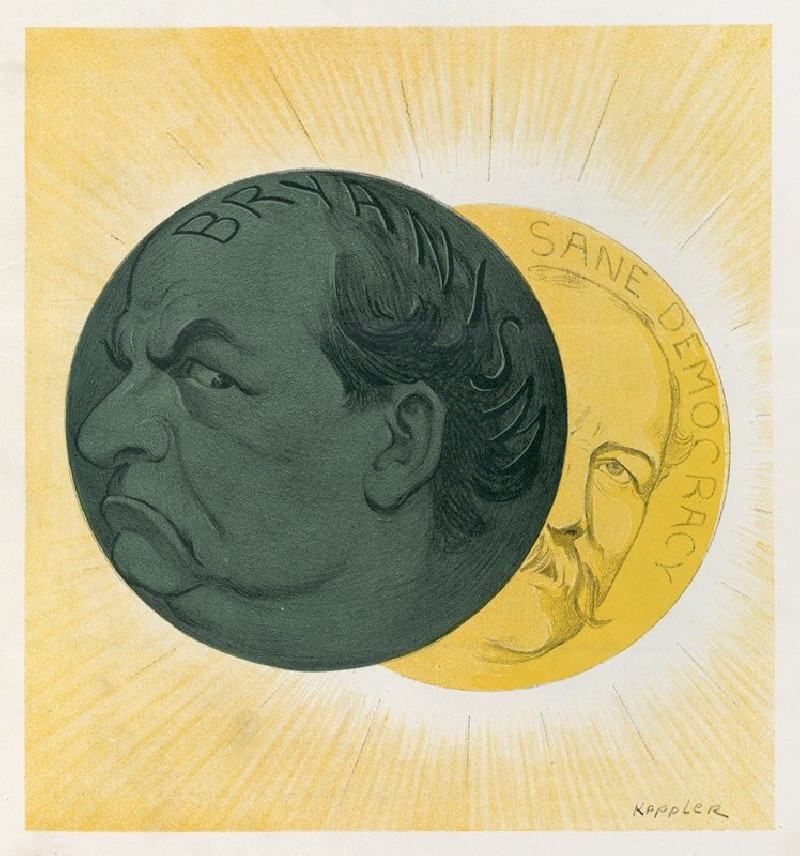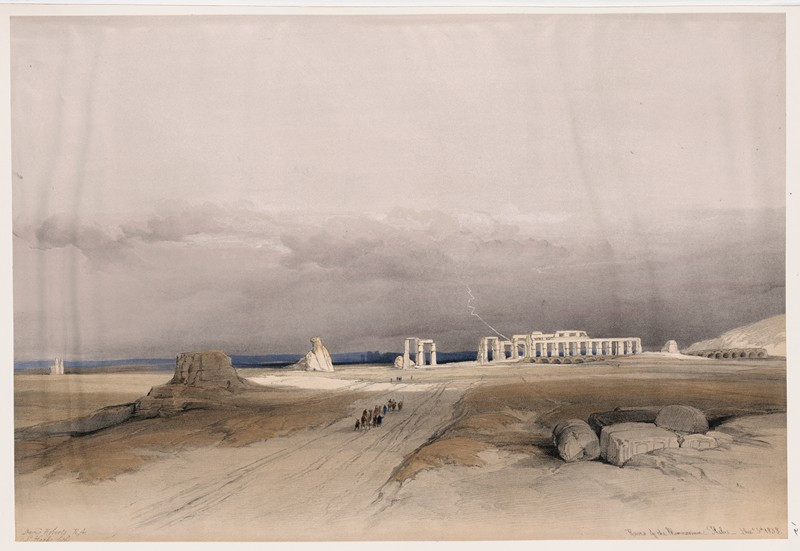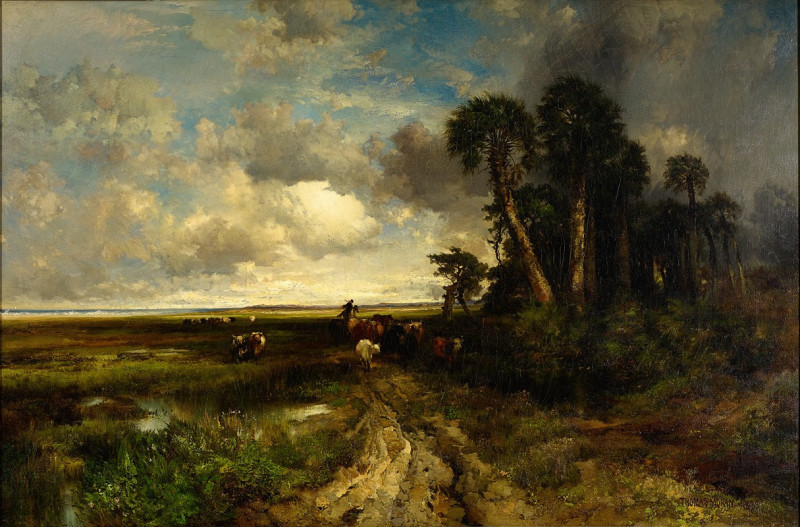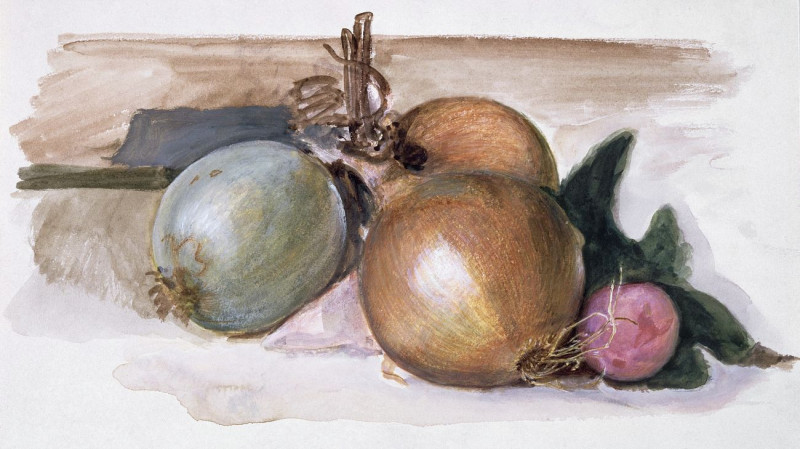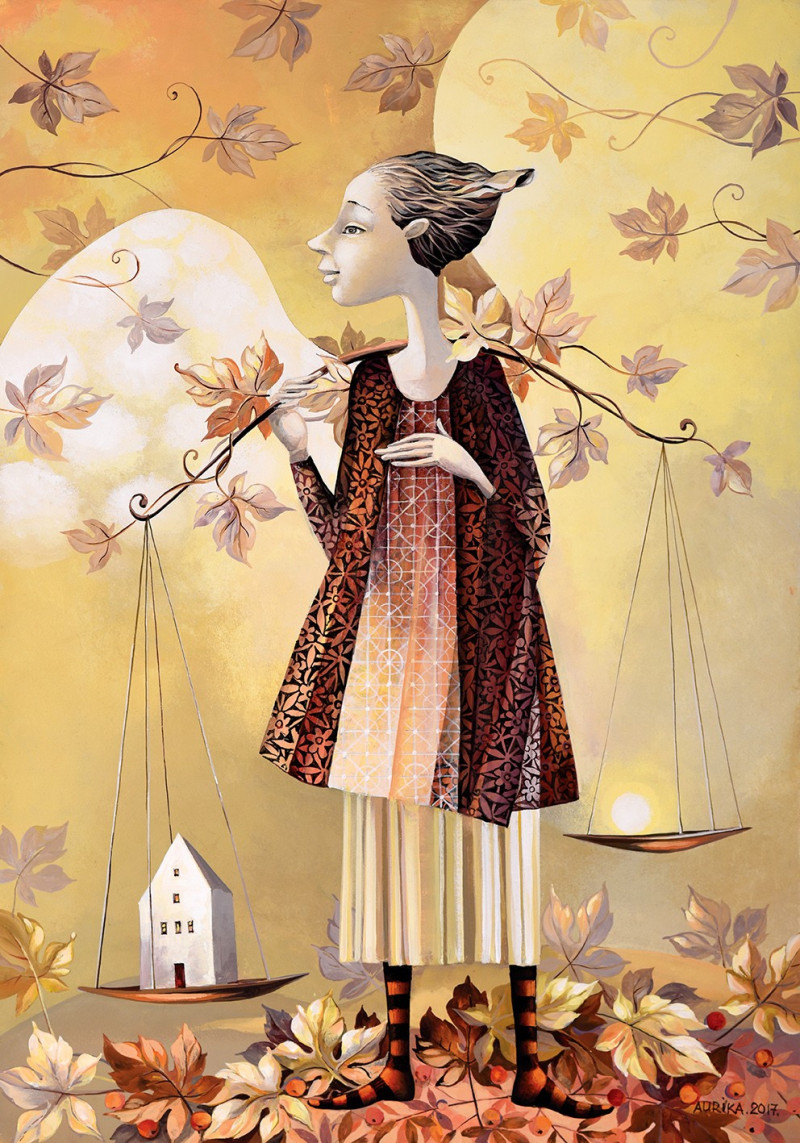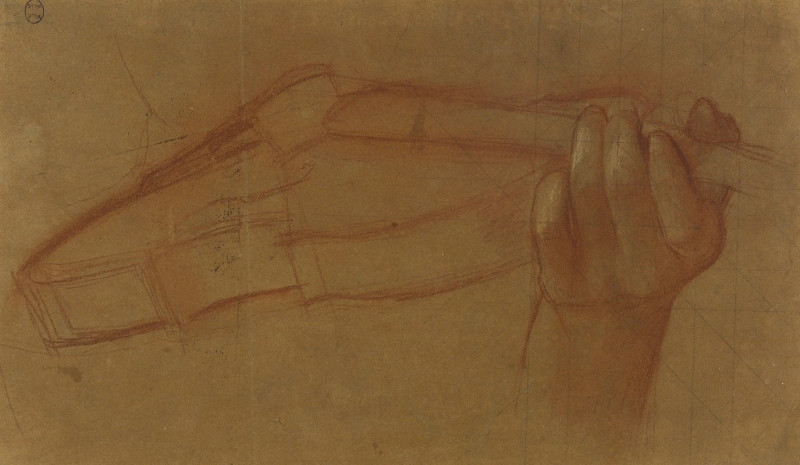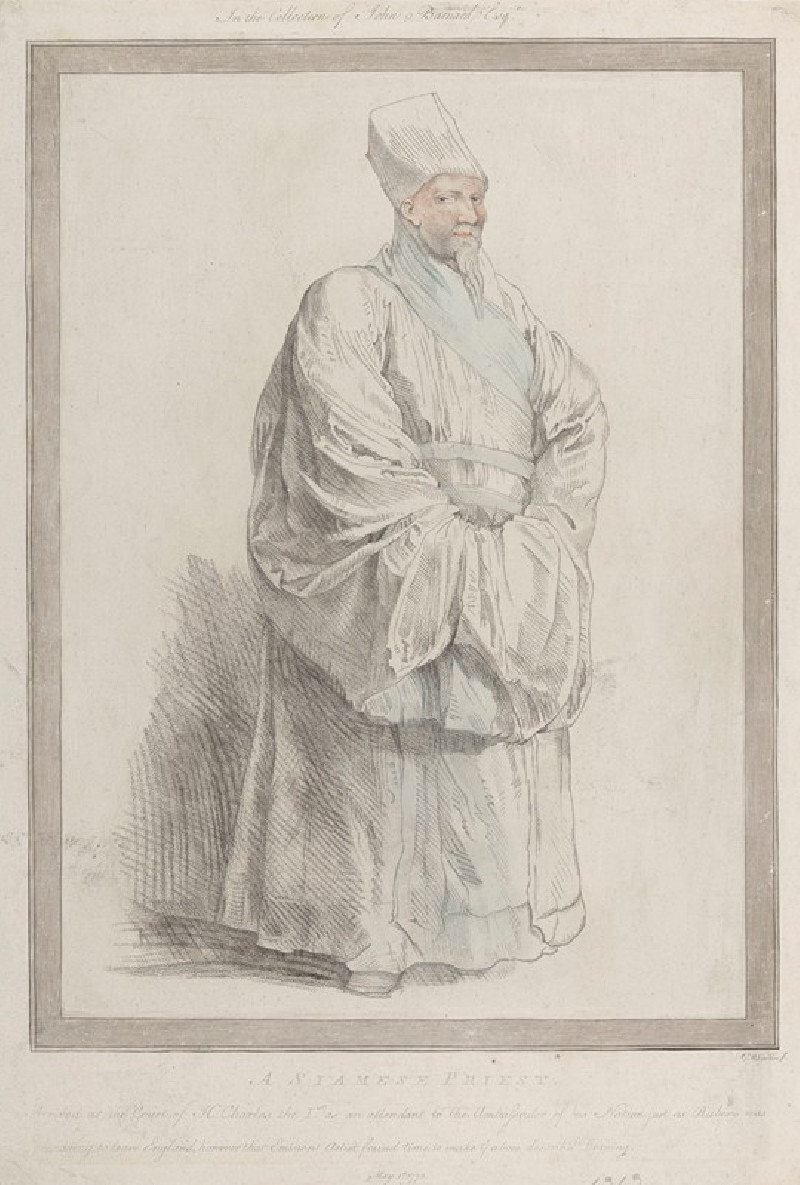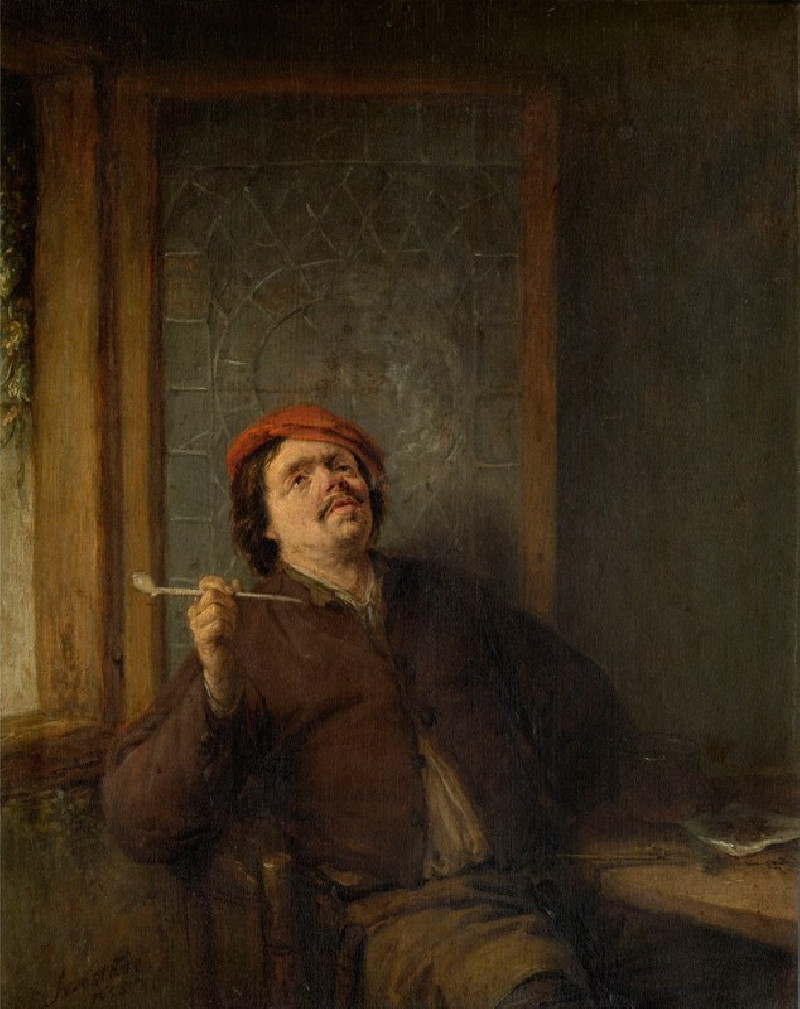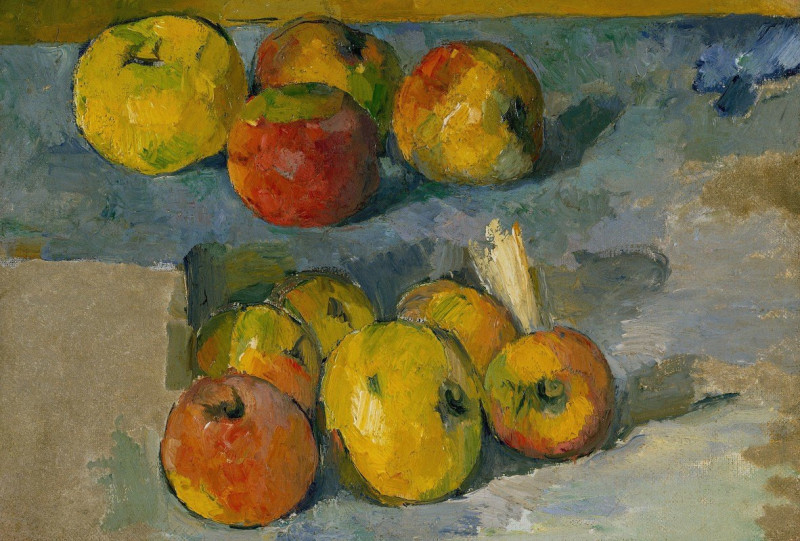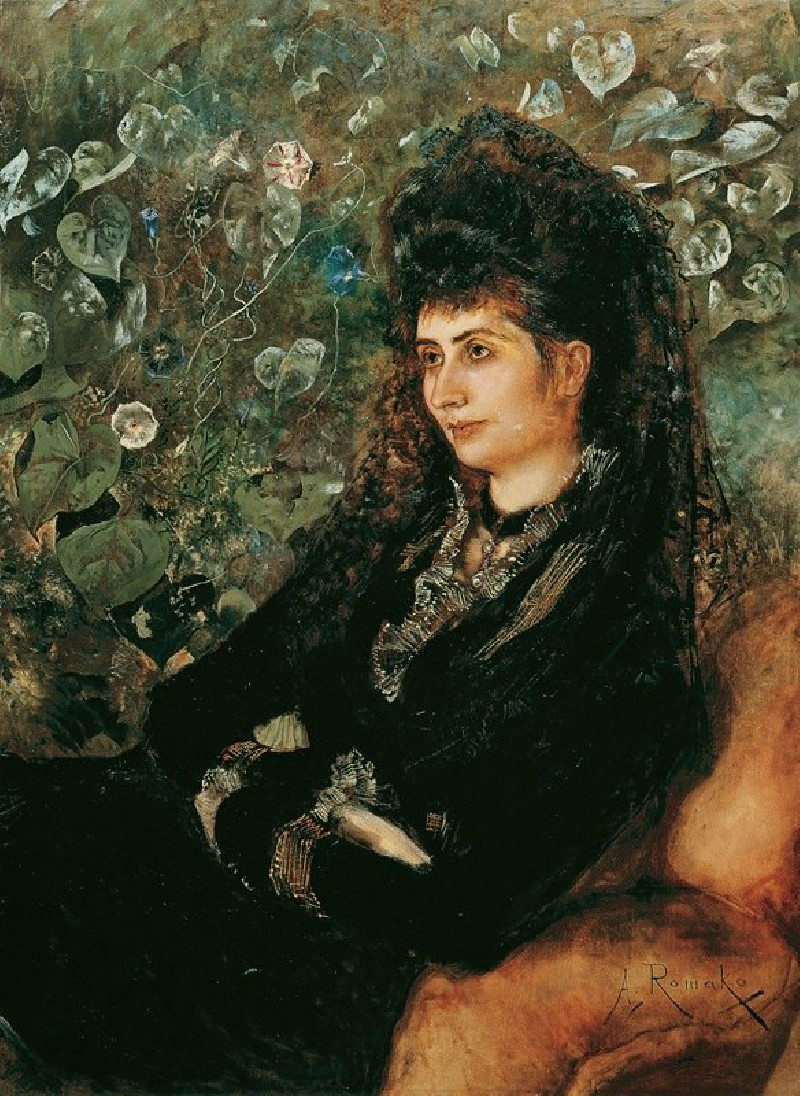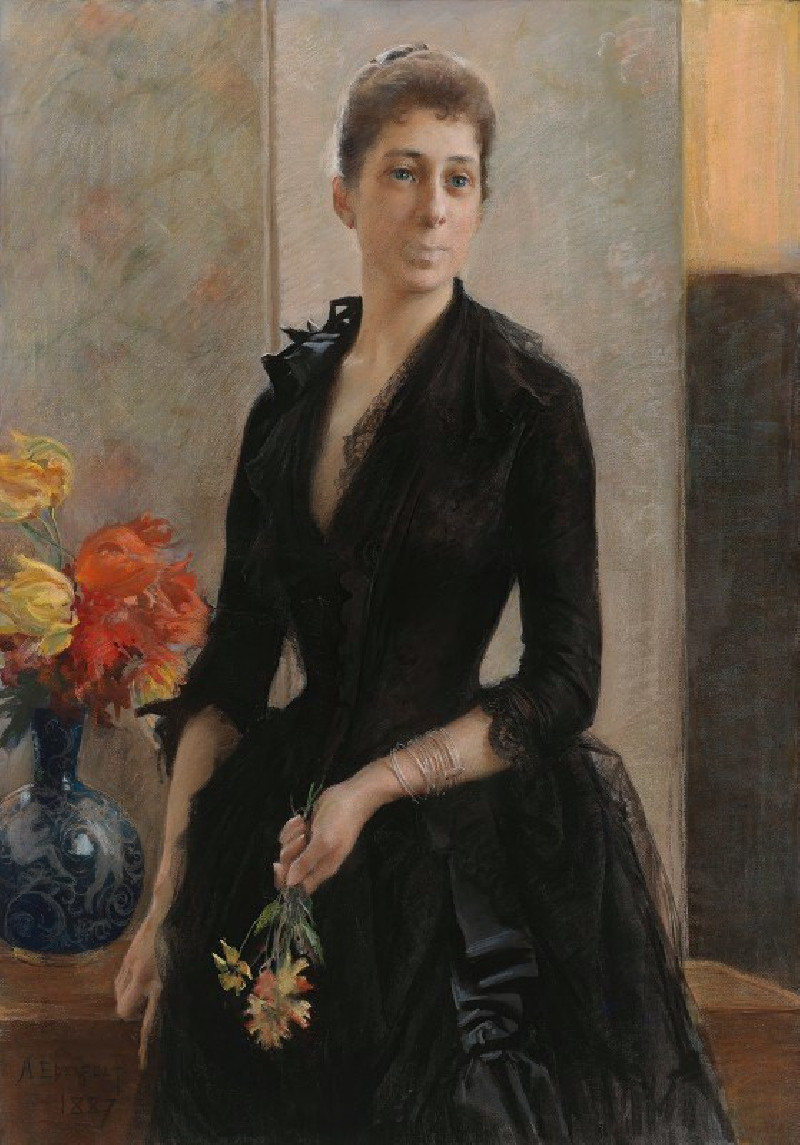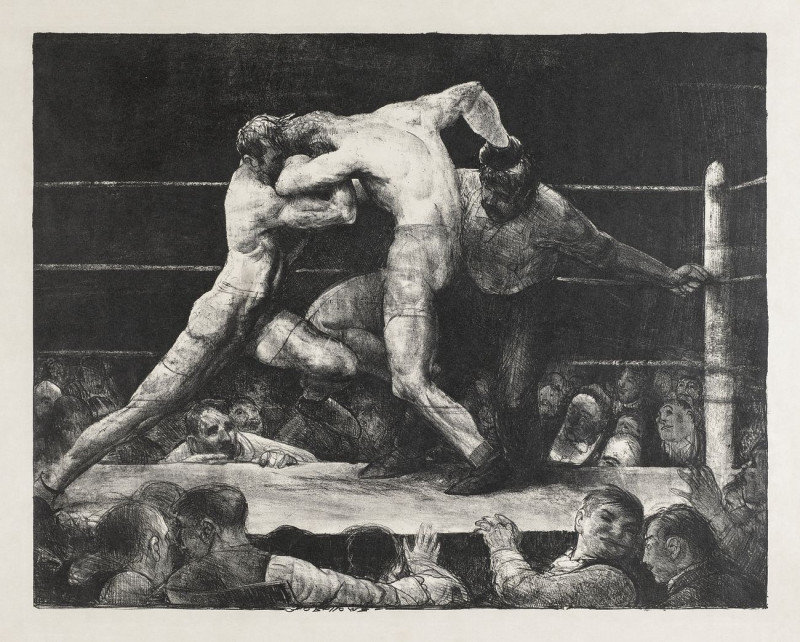Centaur abducting a woman
Technique: Giclée quality print
Recommended by our customers
More about this artwork
This dynamic and intense etching, "Centaur Abducting a Woman," by the talented Dutch artist Johannes Josephus Aarts, captures a legendary moment steeped in drama and motion. The artwork vividly portrays the ancient mythological creature, the centaur, part human and part horse, in a moment of action. Here, the centaur is depicted boldly striding forward, his equine half depicted with muscular and powerful legs, indicative of the strength and beastly nature of these mythical beings.The composition masterfully draws attention to the interaction between the centaur and the woman he is abducting. The woman, held against her will, is carried effortlessly in the arms of the centaur, her body arched in a mix of resistance and resignation. The expression on her face and the tension in her posture suggest fear and desperation, making the scene both compelling and unsettling.The background of the scene enhances the narrative's tension, with wild, untamed nature surrounding the figures. The dense, detailed foliage and trees convey a sense of deep wilderness, possibly hinting at the centaur's domain where ordinary human laws and societal norms hold no weight.This etching not only stands as a testimonial to Aarts' skill with line and texture but also resonates with the themes of Greek mythology, exploring complex narratives of power, control, and the primal instincts that often conflict with civilized behavior.
Delivery
Returns
Johannes Josephus Aarts was a Dutch painter, illustrator, lithographer, engraver, etcher, writer, academic teacher and director, lecturer, sculptor and book-cover designer.
Jan Aarts received training in the Royal Academy of Art, The Hague. He was active there until 1911, and in Amsterdam from 1911 to 1934. Initially, until around 1900, Aarts worked above all on engravings. Thereafter he began to also use other graphic methods. In his work, one found depictions of farmworkers, dyke workers and later also tramps, beggars and invalids. Between 1920 and 1930 he produced mostly visionary work with apocalyptic scenes.

